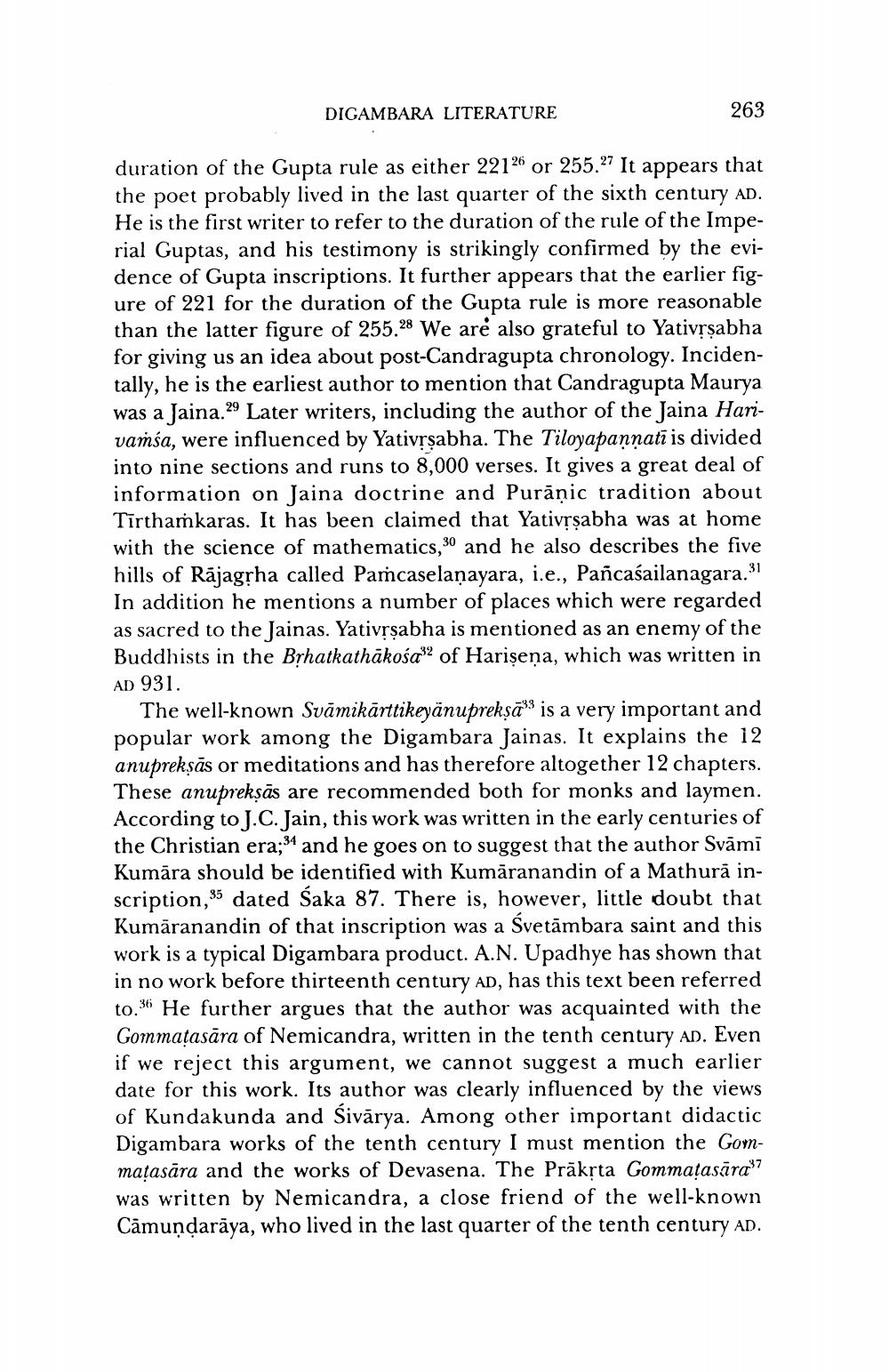________________
DIGAMBARA LITERATURE
263
duration of the Gupta rule as either 22126 or 255.2" It appears that the poet probably lived in the last quarter of the sixth century AD. He is the first writer to refer to the duration of the rule of the Imperial Guptas, and his testimony is strikingly confirmed by the evidence of Gupta inscriptions. It further appears that the earlier figure of 221 for the duration of the Gupta rule is more reasonable than the latter figure of 255.28 We are also grateful to Yativrşabha for giving us an idea about post-Candragupta chronology. Incidentally, he is the earliest author to mention that Candragupta Maurya was a Jaina.29 Later writers, including the author of the Jaina Harivamsa, were influenced by Yativrsabha. The Tiloyapannatī is divided into nine sections and runs to 8,000 verses. It gives a great deal of information on Jaina doctrine and Puranic tradition about Tirthamkaras. It has been claimed that Yativrsabha was at home with the science of mathematics, 30 and he also describes the five hills of Rājagrha called Pamcaselanayara, i.e., Pañcaśailanagara. 31 In addition he mentions a number of places which were regarded as sacred to the Jainas. Yativrşabha is mentioned as an enemy of the Buddhists in the Brhatkathākośa of Harisena, which was written in AD 931.
The well-known Svāmikārttikeyanuprekṣā” is a very important and popular work among the Digambara Jainas. It explains the 12 anuprekṣās or meditations and has therefore altogether 12 chapters. These anupreksās are recommended both for monks and laymen. According to J.C. Jain, this work was written in the early centuries of the Christian era;34 and he goes on to suggest that the author Svāmi Kumāra should be identified with Kumāranandin of a Mathurā inscription,35 dated Saka 87. There is, however, little doubt that Kumāranandin of that inscription was a Svetambara saint and this work is a typical Digambara product. A.N. Upadhye has shown that in no work before thirteenth century AD, has this text been referred to.36 He further argues that the author was acquainted with the Gommatasāra of Nemicandra, written in the tenth century ad. Even if we reject this argument, we cannot suggest a much earlier date for this work. Its author was clearly influenced by the views of Kundakunda and Sivārya. Among other important didactic Digambara works of the tenth century I must mention the Gom matasāra and the works of Devasena. The Prākrta Gommațasāra was written by Nemicandra, a close friend of the well-known Camundarāya, who lived in the last quarter of the tenth century AD.




